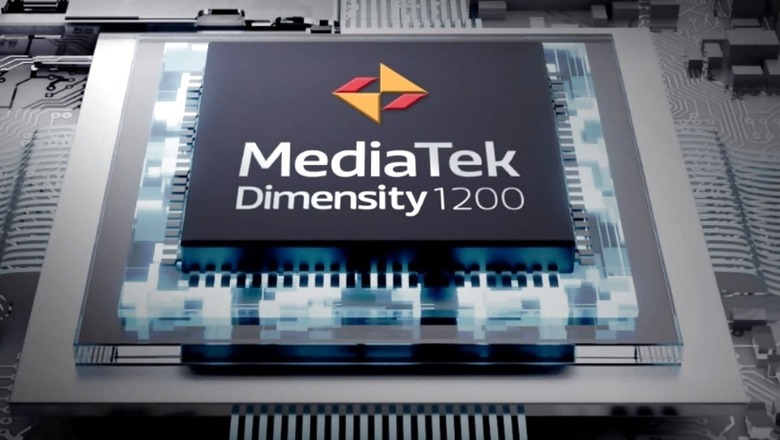
views
At the ongoing Mobile World Congress 2021, MediaTek, the world’s largest chipmaker right now by volume, has announced the launch of an interesting venture that may allow small smartphone vendors get the experience of custom tweaking chipset resources to offer better streamlined features on their smartphones. Called the Dimensity 5G Open Resource Architecture, the move will allow OEMs to access the core hardware and software used in the Dimensity 1200 SoC, and either tweak these aspects to their liking, or alter them altogether with custom resources. The one key thing that this does is give OEMs the ability to bake their custom algorithms directly at the chip level, therefore essentially operating the Dimensity 1200 SoC like their own tech stack of sorts.
What can phone makers do?
According to Yenchi Lee, deputy general manager of MediaTek’s wireless communications business, said in a press statement about the Dimensity 5G Open Resource Architecture, “Whether it’s novel multimedia features, unmatched performance, brilliant imaging or more synergy between smartphones and services, with our architecture device makers can tailor their devices to complement a variety of consumer lifestyles.”
While that puts things in an over-simplified way, that really is the crux of the matter. Based on what MediaTek has put out so far, the Dimensity 5G Open Resource Architecture will allow phone makers access to elements such as the AI co-processor and the display algorithms in the Dimensity 1200 SoC. Typically, tweaks made by any OEM would typically be deployed on top of what MediaTek already offers, which means that phone makers might not often get the exact feature or implementation that they aimed for. Now, they can use their own, custom calibrations and algorithms to define exactly how they want their phone’s display colours to look like.
Also Read: Explained | Why the Qualcomm Snapdragon 888 Plus is an Expectedly Shallow Mid-life Update
The same, MediaTek confirms, can be personalised by brands in terms of background processing power (which can give OEMs better control over battery saver modes and background apps that remain open), graphic intensive tasks (therefore unlocking better gaming abilities through custom algorithms), AI processing, camera processing (resulting in more customised imaging calibration and performance), and even connectivity features such as smart switching between networks to save battery.
Can this make a difference?
Based on precedence, yes. In the smartphone space, Apple makes its own processors, and this allows it to get micro control over every single aspect of its iPhones. This allows it to perfectly integrate its software and hardware, which ensures that it gets the most out of its chips. Samsung, too, makes its own chips, which in turn give it far greater control over how its camera works, how its background processing is taken care of, and so on. With its Kirin chips, Huawei also attempted similar tasks at the peak of its might.
Given what we know so far about how processing and hardware-software integrations work, the Dimensity 5G Open Resource Architecture should be a big deal – particularly for small smartphone makers that do not have the resources to independently develop custom SoCs. These brands constitute most of the present day smartphone world, and make for a bulk of the vendors around the world as well. Hence, if the Open Resource Architecture works the way MediaTek says it would, the move can be a major one.
What’s at stake for MediaTek?
It is also a compelling move from MediaTek to urge more OEMs to use its premium chips such as the Dimensity 1200. While it is the largest chipmaker in the mobile space thanks to its prevalence in the budget devices space, Qualcomm still enjoys greater popularity among flagship smartphones – most Android flagships today use Qualcomm chips. It is this that MediaTek is likely targeting, and it says that devices featuring the Dimensity 5G ORA should start launching from July 2021.
Read all the Latest News, Breaking News and Coronavirus News here.




















Comments
0 comment